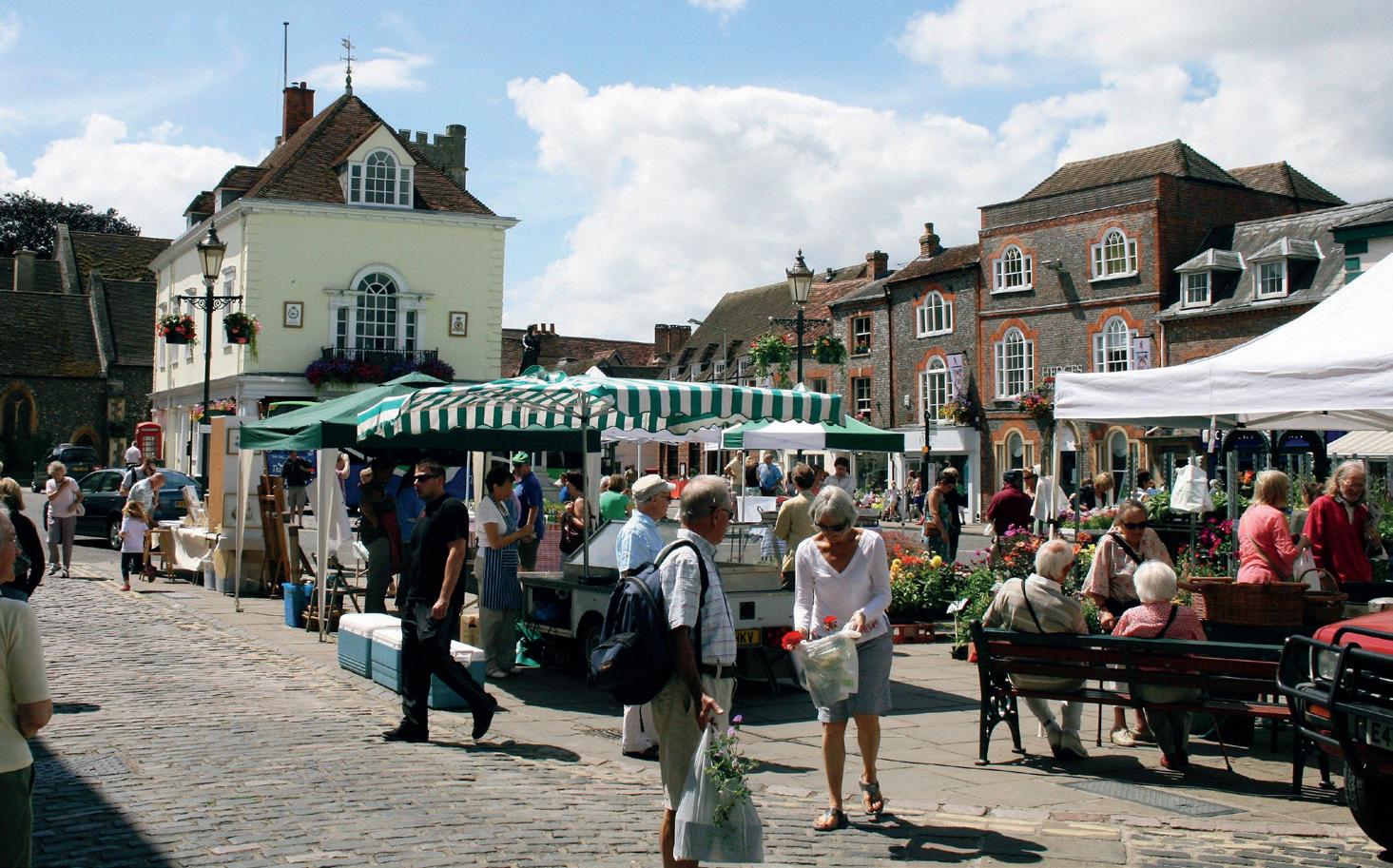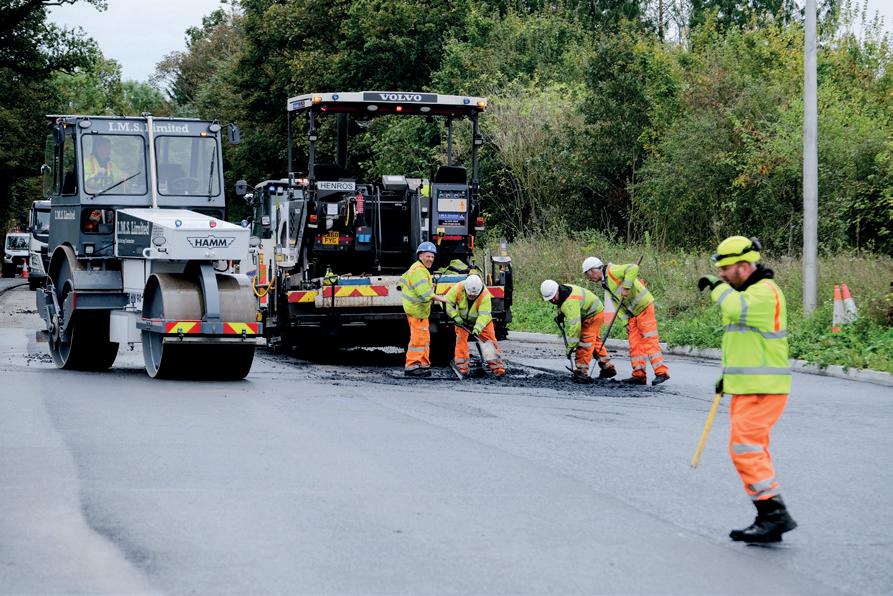Two Councils
Oxford and Shires | Ridgeway
Two unitary councils – improved services and positive growth with better local representation
A proposal for two new councils; introducing Oxford and Shires Council and Ridgeway Council
AND SHIRES
A once-in-a-generation opportunity
The government has invited proposals for new unitary councils in areas like Oxfordshire, where there are currently two tiers of local government: district and county councils. It has also indicated that smaller existing unitary councils, such as West Berkshire, should reorganise to cover areas with approximately 500,000 residents.
This is not an optional change. Change is coming to the way councils operate across the country, and we are taking the opportunity to ensure it is implemented in a manner that genuinely benefits our communities.
We propose to answer the government’s request by creating two new unitary councils that cover the following areas:
• Oxford and Shires Council created from the existing district councils of Cherwell, Oxford City and West Oxfordshire.
• Ridgeway Council created from the existing district councils of South Oxfordshire and Vale of White Horse and the unitary council of West Berkshire.
Note that these are just working titles for now and might change.
The government has stated that it wants councils to work together on this matter and has established strict criteria for the proposals. The majority of the authorities in Oxfordshire have joined forces with West Berkshire to work positively and constructively on the two-unitary proposal, which aims to create strong, financially stable councils that offer high-quality, costeffective, locally driven, and locally accountable services.
To give you an idea of how our current population figures compare to what the government is aiming for, the figures below show where we are now and what our proposal would provide:
Why two new councils?
Creating two new councils balances the criteria set by government that we have to meet, with ensuring the councils represent the areas they serve and can best support local communities. It’s the right balance between being big enough to be viable and remaining locally focused. While each of the two proposed councils will have its own unique strengths, the main benefits of a two-unitary proposal for the whole of Oxfordshire and West Berkshire are:
• It would meet the government’s requirements to have a large enough population that the councils are financially secure, protecting local services.
• While the councils would be new, we would use existing service structures in the Oxfordshire County Council and West Berkshire, such as adult social care, children’s services and highways , to avoid the costly disaggregation of services. This will also save taxpayers money when changing to the new councils.
• The new unitary councils won’t just be more of the same – it is a chance for something new and better. The councils will be forward-looking, innovative and modern, providing better services to residents at a lower cost. They will offer better value , quality services.
• The two councils will be better placed to take advantage of the unique opportunities in each part of the county. Each area will have its own council to drive local ambitions forward, grow the local economies, and build a better future for
each area, recognising that each area has different priorities.
• The councils will still be of a size that allows them to be responsive to the needs of individual communities. They will also be well placed to support the rural areas as well as the urban ones, and not so big that places get forgotten.
• There will be good community representation by councillors, with each council having the appropriate number of elected representatives to better reflect the areas the councils serve.
• The councils will focus on how the new model can bring real economic benefit to communities, strengthening existing business links in partnership and forging new ones. This includes growing the valuable rural economy, which is a large proportion of the area.
• The two-council model will also provide a suitable platform to better respond to local priorities such as developing more affordable housing, protecting our environment, and bringing more jobs across the whole area.
• We will be able to build on the nationally recognised Oxford brand in a way that encourages economic growth across the wider area, as well as building up Oxford, meeting the needs of its residents and supporting its institutions and reputation.
• The councils will be well placed to tailor vital services such as adult social care, children’s services and others to the needs of their individual communities. This proposal would provide more focus and local accountability.
Ridgeway Council
‘Ridgeway Council’ is our proposed new unitary council covering the districts of West Berkshire, South Oxfordshire and Vale of White Horse.
What is the geography?
The new council will be well-placed to maintain and enhance the unique character of our market towns and rural areas.
West Berkshire, South Oxfordshire, and the Vale of White Horse already share deep historical, economic, and geographic ties, symbolised by the working title of our proposed new council, named after the famous 5,000-year-old footpath that travels through the heart of our council areas.
By building on these shared connections, ‘Ridgeway Council’ will provide a strong and effective foundation for the future.
We think this is the best solution for local residents. It’s an opportunity to maintain a sense of local identity while also delivering good local services that protect our most vulnerable residents and provide value for money.
RIDGEWAY COUNCIL
How we would deliver better services for residents
With a strong track record of collaboration –particularly between South Oxfordshire and the Vale – we already have the experience of working together to deliver highly successful and cost-effective shared services. West Berkshire also has a long history of collaborative partnership work with neighbouring councils. Expanding this approach across our region will allow us to superpower that successful partnership by working on a scale that ensures continuity, efficiency, and financial resilience while making the best use of resources.
Oxford & Shires Council
Oxford & Shires Council
Oxford and Shires Council
Oxford and Shires
Our proposed two-unitary model would see Cherwell, Oxford City and West Oxfordshire coming together to form one unitary council in the north of the county, complementing the proposed southern unitary Ridgeway Council.
Benefits of our geography
The new council will be well-placed to build on the international brand of Oxford and drive economic growth across key towns while also protecting, supporting and growing the rural communities in the area.
It will be able to ensure that growth, affordable housing, and infrastructure can be proactively
Council
AND SHIRES
Oxford & Shires Council
Oxford City
planned and delivered in a way that best uses the skills, businesses, and communities in ambitious towns like Banbury, Bicester, Carterton, and Witney.
It can also consider how those towns and the wider rural areas support and complement Oxford’s growth. It will build on the links we already share while respecting the culture and heritage of our communities.
Tourism is also a major strength, with many of the key visitor attractions across the area and the Cotswolds contained in the new boundary. The council will be able to build on this strength, enhancing the visitor economy and managing tourism.
How we would deliver better services for residents
We are already starting work to combine waste collection services, potentially saving millions for taxpayers every year. The modelling for this work shows there could be many opportunities for the new council to make efficiencies and improve services beyond what people currently receive.
The council could take a more interventionist approach, using assets currently not used to drive the delivery of modern, efficient, affordable homes. The council would proactively tackle the housing crisis, building homes that people need.
The council wouldn’t just be proactive in housing, it could be in a much better position to advocate for communities on key local issues such as flooding, sewage release and infrastructure. Focusing on the smaller geography would allow it to influence and drive real change in a way we don’t currently see.
It would be possible to align the services currently provided by the individual councils in the area, allowing residents to access services across a much bigger geography. For example, one leisure service could enable people to have a membership that gives access to gyms across the whole area, making it easier for people to use them at home or work. The council would also be able to join up services to better support health and wellbeing and tackle deprivation in a way tailored to each individual community.
Growing our economy and communities
The new council has the potential to bring real economic growth to Oxford and the wider area, providing further rewarding opportunities for residents and businesses in Oxford and all our towns, including the likes of Banbury, Bicester, Carterton and Witney. This could bring significant benefits to Oxford and all the surrounding geography with more jobs, better growth and better infrastructure.
The council will be able to represent the whole area at the national level, building on the Oxford brand and taking advantage of our many other unique assets, including the largest active military base in the UK, destinations such as Blenheim Palace and Bicester Village, an innovative and growing knowledge and technology corridor, and long-standing strengths in motoring and logistics.
The council would also retain an appropriate number of elected representatives, meaning Oxfordshire would keep enough local councillors to represent the views of their areas, understand and address local issues and help shape growth and employment in their areas Not only this, but we would put structures in place in Oxford and
key towns to focus on the individual needs of those urban areas and help support their growth. This would enable the council to ensure communities have the support they need, both in urban and rural areas. Villages and agricultural areas would also be well represented by a council of this size, making sure their needs are heard the rural economy is supported to grow and flourish.
What is the difference between the current councils and unitary councils?
The difference between a two-tier authority, comprising district and county councils, and a unitary council can be confusing. The diagram below outlines the responsibilities of each type of council. In a two-tier structure, services are divided between county and district councils, whereas a unitary council encompasses all services.
The changes will not affect parish and town councils structurally, and the government has no plans to change them. Towns and parish councils look after services such as allotments, some parks/play areas and community facilities.
Education and learning
Highways and transport
Fire and rescue and community safety
Waste disposal and recycling
Public health improvement and prevention services
Libraries, cultural, registration and coroner’s services
Household
Planning
Leisure
Environmental
Council
County Council
Unitary Council
How would this work with a new strategic authority
The government has also asked for areas to propose a large regional mayoral strategic authority, covering populations of at least 1.5 million, overseen by an elected mayor. These new regional authorities will provide services like planning policy, strategic housing, health, nature recovery and economic development. A few already exist in places like the West Midlands and Greater Manchester. While they focus on the wider region and strategic issues, unitary councils will provide the local services for their area.
The new unitary councils will play a key role in the new strategic authorities, with the council leaders sitting on the board. A benefit of
two unitary councils in Oxfordshire and West Berkshire is that those areas will have a stronger voice in the strategic authority, tailored to the communities they represent. They will also be better able to build on the distinct opportunities in each area to help boost regional growth.
Discussions on the geography of the strategic authority for our areas are ongoing. The current debate focuses on an area including Oxfordshire and Berkshire, with other potential areas to be considered.
Our two unitary council proposal would support a strategic authority that included Oxfordshire and Berkshire, but it’s important to note that the work to create a proposal for the unitary councils and work to create a proposal for a new strategic authority are separate.
What other unitary proposals are there?
Alongside this proposal, two other proposals are being put forward:
• A single unitary council for Oxfordshirebeing developed by Oxfordshire County Council.
• A three-unitary option – with a unitary city on expanded boundaries and northern and southern unitaries, potentially including West Berkshire. This is being developed by Oxford City Council.
Have your say
You can find out more about this proposal
Here you can also find out how to share your thoughts on the proposal and any events happening in your area, so you can come along to chat with us.
Your views will help us shape and finalise the proposal.
Alternative formats
You can ask for alternative formats of this document such as large print or translations by emailing jointheconversation@southandvale.gov.uk or call 01235 422425.
















